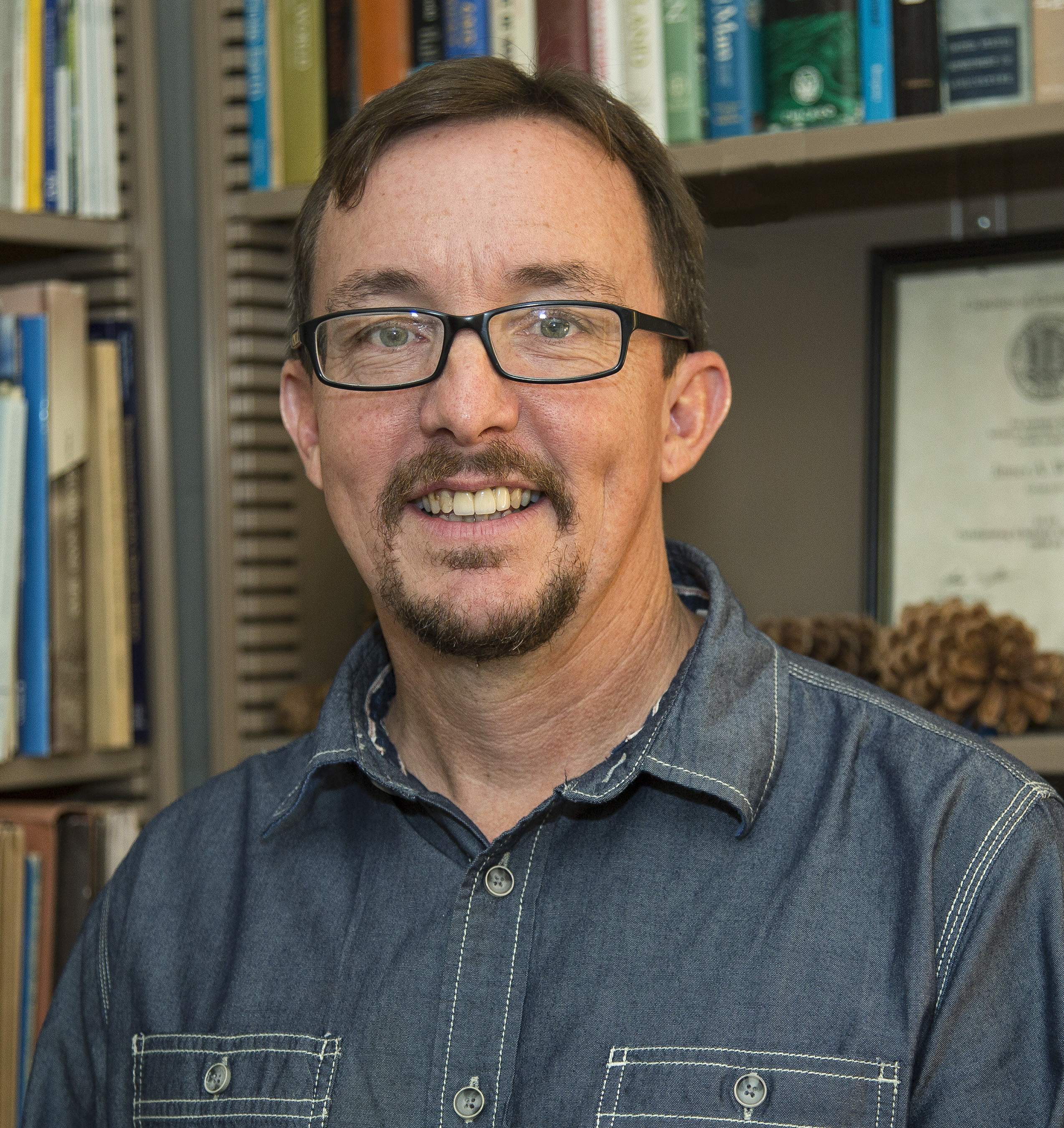 James Wanket
James WanketA massive, worldwide die-off of animals 13,000 years ago may contain clues as to what’s in store for modern Africa, according to a research team that includes Sacramento State Professor James Wanket.
The study, led by UC Berkeley Biology Professor Anthony D. Barnosky, recently was published by the National Academy of Sciences. It looked at mass extinctions at different sites around the world involving large mammals such as mastodons, musk oxen, giant sloths, and camels.
The findings indicate that the loss of these animals, particularly the elephant types, has a significant impact on the landscape, leading to the formation of denser forests and the loss of many small mammal species.
Barnosky invited Wanket to join the team because of the Sac State professor’s study of the ancient vegetation record in the Klamath Mountains of Northern California. That project is near an important paleontology site, Samwell Cave near Lake Shasta, with records of the mammal die-out during the end of the last ice age.
While paleoecologists traditionally have interpreted the rapid transformation of vegetation as contributing to the animals’ extinction, Barnosky’s study suggests otherwise.
“This paper kind of flips that on its head and says it seems in some cases extinction of the large mammal led to a lot of the changes we see in the vegetation record,” Wanket says. “It’s a fairly new idea – a large-scale look and re-analysis of information that’s out there.”
Mammoths and mastodons were browsers, eating small trees and shrubs, and uprooting larger trees. That kind of activity thins out a forest’s dense understory, the broadleaf trees that grow under the taller evergreens. It creates a mosaic of habitats.
“That understory seems to have really taken off right at the time the elephant types went extinct,” Wanket says. And it didn’t just affect vegetation. The smaller mammals that lived in the micro-habitats created by the mammoths and other large animals saw their territory shrink as the trees closed in and they, too, died out.
“When you remove big animals from the landscape, you expect to have everything else change,” Wanket says.
A similar situation is taking place in present-day Africa with the rapid depletion of the elephant population. Some experts fear that elephants could be extinct in the next few decades. Just as their ice age relatives did, elephants uproot shrubs and tear down trees as part of their foraging, so their loss could be as devastating in some areas of Africa as the loss of large mammals was 13,000 years ago.
“That’s what the future holds for that area,” Wanket says. “And it’s not just the elephants we worry about, it’s everything that depends on the mosaic habitat.”
Other participants in the study came from UC Berkeley, Stanford University, and the University of Chile.
Wanket has been with Sacramento State for 12 years, and teaches courses on physical geography and climate change, as well as a field course.
He notes that there’s another academic impact to studies such as this. “It certainly benefits my students,” Wanket says. “I can bring this research into my class and plug the students into it.”
Wanket’s field course is another way of bringing the students face to face with their subject matter. He and the students travel to a field site each Friday to observe landscapes and collect data. That includes one long trip each semester to sites such as Mono Lake on the eastern side of the Sierra Nevada.
“We try to make the lecture setting come alive by seeing how these things operate in the real world,” Wanket says.
For more information on the study, contact Wanket at (916) 278-7580 or jwanket@csus.edu. For media assistance, call the University’s Public Affairs office at (916) 278-6156. – Craig Koscho
